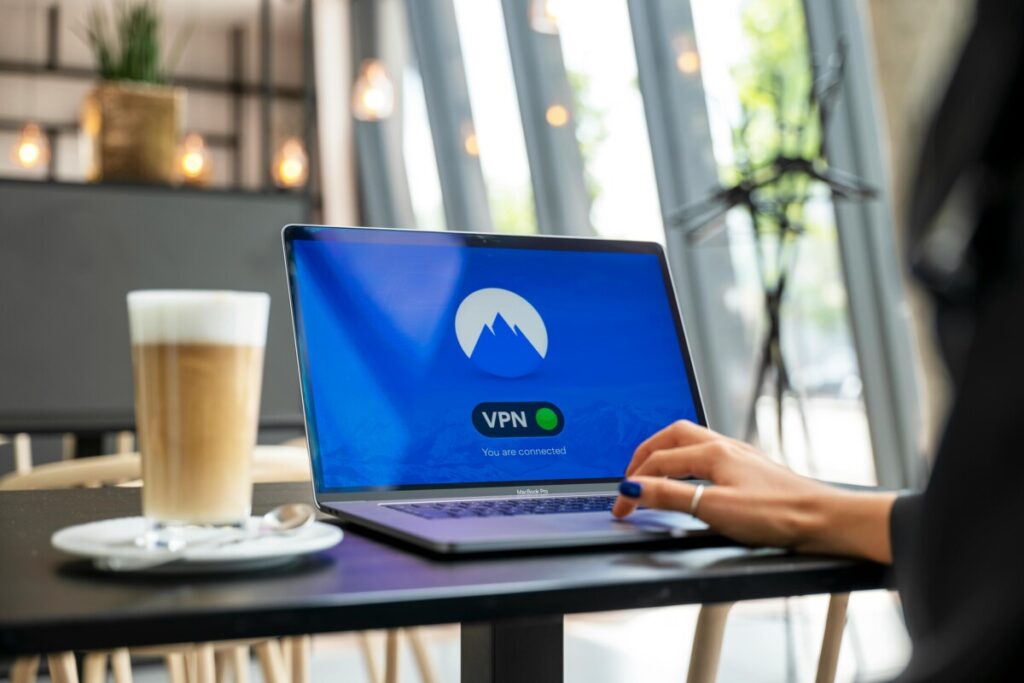Understanding Secure Network Protocols

In today’s digital landscape, protecting sensitive information and securing network communications is more important than ever. One crucial aspect of securing networks is the implementation of secure network protocols. These protocols play a vital role in ensuring that data transmissions are encrypted, authenticated, and free from unauthorized access. In this article, we will explore the world of secure network protocols, their importance, types, implementation, best practices, and future prospects.
What are network protocols?
https://eca9eem3oz71ek9rw3kdo1fk0p.hop.clickbank.net
Before delving into secure network protocols, it is essential to understand what network protocols are. Network protocols are a set of rules or guidelines that govern the exchange of information between devices connected to a network. They define how data is sent, received, and interpreted, allowing for seamless communication between different computers and devices.
Key Takeaways:
Network protocols are rules that govern data exchange in a network.
Secure network protocols ensure data transmissions are encrypted, authenticated, and free from unauthorized access.
The importance of secure network protocols
In a world where cyber threats are constantly evolving, securing network communications has become paramount. Secure network protocols provide a layer of protection by ensuring that sensitive data shared over networks remains confidential and inaccessible to unauthorized parties. By encrypting data transmissions, these protocols prevent eavesdropping, tampering, and spoofing attacks.
Moreover, secure network protocols authenticate users and devices, guaranteeing the integrity and origin of data. They also enable secure remote access, allowing individuals to connect to their networks in a secure manner, even when working from a remote location. This not only safeguards the confidentiality of data but also maintains the productivity and efficiency of organizations.
Common types of secure network protocols
Various secure network protocols are available for different purposes. Let’s explore some of the most widely used ones:
1. Secure Sockets Layer (SSL) / Transport Layer Security (TLS)
SSL/TLS protocols are widely utilized for securing online communications, particularly for websites. SSL/TLS certificates encrypt data between web servers and browsers, ensuring that data transmitted during online transactions or interactions remains secure and private.
2. Internet Protocol Security (IPsec)
IPsec provides network-level security by encrypting and authenticating IP packets. It is commonly used for establishing secure virtual private networks (VPNs) between networks or remote locations. IPsec ensures that data sent over public networks is protected from interception or manipulation.
3. Secure File Transfer Protocol (SFTP)
SFTP is a secure version of the File Transfer Protocol (FTP) that enables secure file transfers over networks. By encrypting data during transmission, SFTP ensures that confidential information remains protected, making it ideal for secure file sharing and remote file management.
4. Secure Shell (SSH)
SSH is a cryptographic protocol that provides secure remote access and file transfers. It allows users to log into remote systems securely and execute commands, all while encrypting the entire connection. SSH is widely used in system administration and remote server management.
5. Hypertext Transfer Protocol Secure (HTTPS)
HTTPS is a secure version of the standard Hypertext Transfer Protocol (HTTP) used for website communication. It incorporates SSL/TLS encryption to protect data exchanged between websites and users, ensuring secure browsing and online transactions.
How do secure network protocols work?

https://d0dc4ep8m90-fl8k-mfdsetkb5.hop.clickbank.net
Secure network protocols rely on sophisticated encryption algorithms and mechanisms to safeguard data transmissions. When data is sent over a network using a secure protocol, it is encrypted using encryption keys. These keys scramble the data to make it unreadable to unauthorized individuals.
Upon receiving the encrypted data, the recipient uses a corresponding decryption key to decrypt and access the information. This ensures that even if an attacker intercepts the data during transmission, it remains incomprehensible without the decryption key.
Secure network protocols also involve authentication mechanisms to verify the identity of the communicating parties. This prevents intruders from impersonating legitimate users or devices and gaining unauthorized access to sensitive information.
https://www.threatintelligence.com/
Benefits of using secure network protocols
The advantages of implementing secure network protocols are manifold. Here are some key benefits:
Confidentiality: Secure network protocols protect data confidentiality by encrypting information during transmission, preventing unauthorized access.
Integrity: By authenticating data and using encryption algorithms, secure network protocols ensure that data remains unaltered during transmission, safeguarding its integrity.
Authentication: Secure network protocols verify the identities of communicating parties, preventing malicious actors from impersonating legitimate users or devices.
Secure Remote Access: Secure network protocols allow users to connect to their networks securely from remote locations, enabling remote work and improving productivity.
Regulatory Compliance: Implementing secure network protocols helps organizations meet various regulatory requirements regarding data privacy and security, reducing legal risks.
Implementing secure network protocols
Implementing secure network protocols involves selecting the appropriate protocol for your specific needs and configuring it properly. Let’s explore the key steps involved in the implementation process:
Choosing the right protocol for your needs: Each secure network protocol serves different purposes; therefore, it is crucial to assess your requirements and choose the one that best meets your needs. Consider factors such as the level of security required, compatibility with existing infrastructure, and ease of implementation.
Configuring and setting up secure network protocols: Once you have chosen the appropriate protocol, it’s time to configure and set it up. Here are some specific steps for common secure network protocols:
SSL/TLS certificate installation: If you are implementing SSL/TLS, you need to obtain and install an SSL/TLS certificate on your web server. This certificate, issued by a trusted certificate authority (CA), enables secure communication between your server and client browsers.
IPsec configuration: When setting up IPsec, you need to configure the appropriate security policies, encryption algorithms, and integrity checks. This ensures that data transmitted over the VPN remains encrypted and secure.
SFTP setup: Configuring SFTP involves setting up user accounts and permissions, choosing secure authentication methods, and configuring access restrictions. This ensures that file transfers occur securely and reliably.
SSH settings: To secure remote access using SSH, you must configure strong security parameters, disable insecure protocols, and implement key-based authentication. This minimizes the risk of unauthorized access and data breaches.
HTTPS implementation: If you are migrating your website to HTTPS, you need to obtain an SSL/TLS certificate, configure your web server to use HTTPS, and redirect HTTP traffic to the secure HTTPS connection. This ensures that all communication with your website remains encrypted and secure.
Best practices for securing network protocols
While implementing secure network protocols is essential, following best practices further enhances the security of your network communications. Here are some recommendations:
Keep software up to date: Regularly update and patch your network devices, servers, and applications to protect against known vulnerabilities and exploit attempts.
Use strong encryption algorithms: Ensure that the chosen network protocols utilize robust encryption algorithms to protect data confidentiality effectively.
Enforce secure password policies: Implement password complexity requirements, multi-factor authentication, and regular password changes to prevent unauthorized access to network devices and user accounts.
Limit user privileges: Assign appropriate access permissions to users, restricting their privileges to the necessary extent. This helps prevent unauthorized access and limit potential damage in case of a breach.
Monitor network activity: Regularly monitor and analyze network traffic for suspicious activities or anomalies. Intrusion detection and prevention systems can help identify potential security threats.
https://d0dc4ep8m90-fl8k-mfdsetkb5.hop.clickbank.net
Common challenges and solutions
Implementing secure network protocols may come with certain challenges, particularly related to compatibility, complexity, and user resistance. However, these challenges can be overcome with proper planning and education. Here are some common challenges and their solutions:
Compatibility issues: Different protocols may have compatibility issues with existing infrastructure. To address this, assess the compatibility of protocols with your network environment and consider necessary upgrades or adjustments.
Complexity and configuration: Configuring and implementing secure network protocols can be complex. Ensure that you have skilled IT professionals who understand the protocols and can implement them correctly. Additionally, consider using third-party tools or consulting services for assistance.
User resistance to change: Users may resist adopting new protocols due to unfamiliarity or inconvenience. To overcome this, provide training and educate users about the benefits and importance of secure network protocols. Emphasize the potential risks associated with non-secure communications.
Network protocol auditing and monitoring
Regular auditing and monitoring of network protocols are crucial for maintaining a secure network environment. By monitoring network activity and analyzing protocol logs, you can identify potential vulnerabilities, unusual behaviors, or security breaches. This allows you to take proactive measures to mitigate risks and ensure the ongoing security of your network.
Tools for securing network protocols
Various tools are available to assist in securing network protocols. These tools offer functionalities such as protocol analysis, vulnerability scanning, intrusion detection, and encryption management. Some popular tools include Wireshark, Nessus, Snort, and OpenSSL. Research and select the tools that best match your specific requirements and infrastructure.
The future of secure network protocols
As cyber threats continue to evolve, secure network protocols are likely to undergo advancements and improvements. Emerging technologies such as quantum encryption and blockchain may revolutionize the field of network security, offering enhanced protection against sophisticated attacks. It is crucial for organizations to stay updated with the latest developments in secure network protocols and adapt their security measures accordingly.
https://fiscalfitnessflow.com/index.php/2025/06/12/understanding-data-breach-consequences/
Conclusion
In an era where cyber attacks are a constant threat, securing network communications has become a necessity. Secure network protocols offer an effective way to protect data confidentiality, integrity, and authenticity. By implementing the right protocols, configuring them properly, and following best practices, organizations can fortify their defenses and minimize the risk of data breaches. Continuous monitoring, auditing, and adaptation to evolving threats are essential for maintaining a secure network environment. Stay vigilant, employ robust protocols, and stay up to date with the evolving landscape of secure network protocols to ensure the security of your organization’s data and communications.
FAQs
1. What are secure network protocols?
Secure network protocols are rules and standards designed to protect data transmission over networks. They ensure confidentiality, integrity, and authentication of information, safeguarding it from unauthorized access and cyber threats.
2. Why are secure network protocols important?
Secure network protocols are crucial because they provide a framework for safe communication over the internet and other networks. They protect sensitive information from interception, tampering, and unauthorized access, ensuring data privacy and security for individuals and businesses.
3. What are some common secure network protocols?
Common secure network protocols include SSL/TLS, which encrypts data transmitted over the internet; HTTPS, which secures website communications; and VPN protocols like OpenVPN and IPSec, which create secure tunnels for data transfer.






